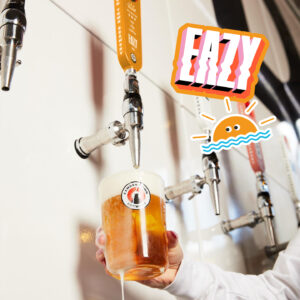When it comes to no-and-low, that no longer means no choice, no quality, no variety. Thanks to outfits like Mash Gang and their peers, there is something for everyone. Here Jordan Childs, the leader and brewer at Mash Gang, shares his thoughts on changing consumer perception of now-and-low beverages, his love of working with breweries and businesses of all kinds, and the group’s collective desire for continuous improvement. All photography: Elspeth Vincent
Gone are the days where choosing a beer without the alcohol meant forgoing genuine choice in the process. Countless macro businesses now offer 0.5% or 0.0% iterations of well-known brands. And with January behind us, numerous independents continue to throw their hats into the ring with a fascinating array of low and no pales, lager, sours and stouts.
Beers that complement the burgeoning number of beverages available to consumers that want a great beer, just with less, or none, of the alcohol. For Mash Gang, who started their brewing journey back in the first COVID lockdown, no-and-low is their raison d’être. And if ongoing demand is anything to go by, they’re showing that the appetite for quality beers, without the alcohol, is only growing and growing.
But let’s first take a moment to reflect. A successful crowdfunder, brewing 36 beers, exports to the Nordics, Australia, and USA to name but a few along with 700% growth FY21-FY22 – it’s not been a bad few years for Mash Gang, led by brewer Jordan Childs. Of course, that’s come with a lot of hard work along the way. But in doing so, they’ve showed that you can produce exciting beers that taste great, look the part and further broaden people’s understanding of what low and no alcohol beers can really be.
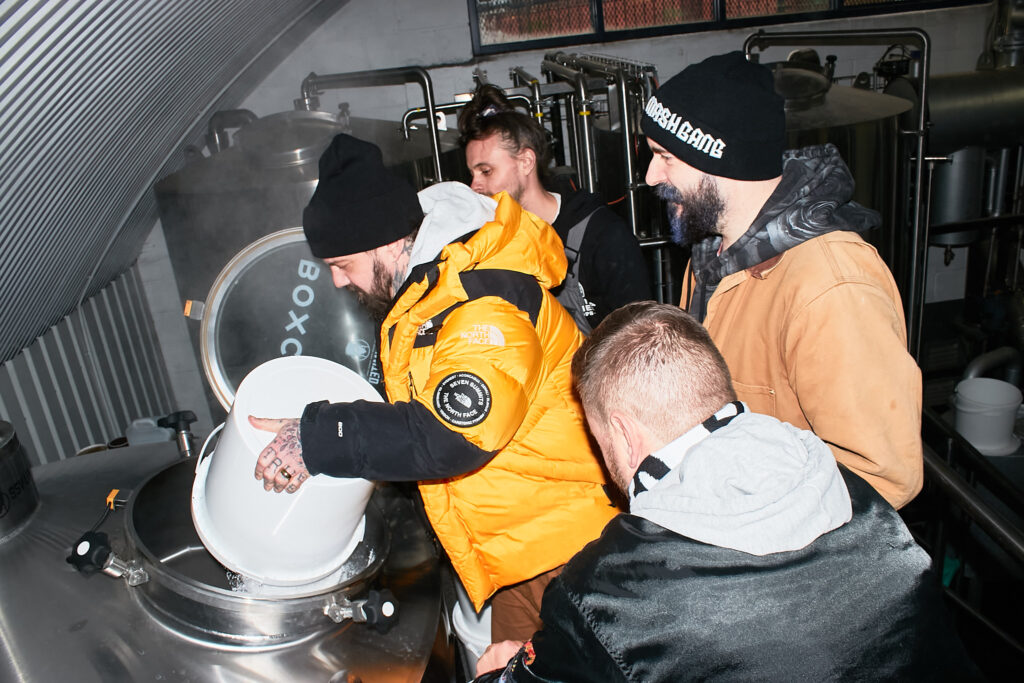
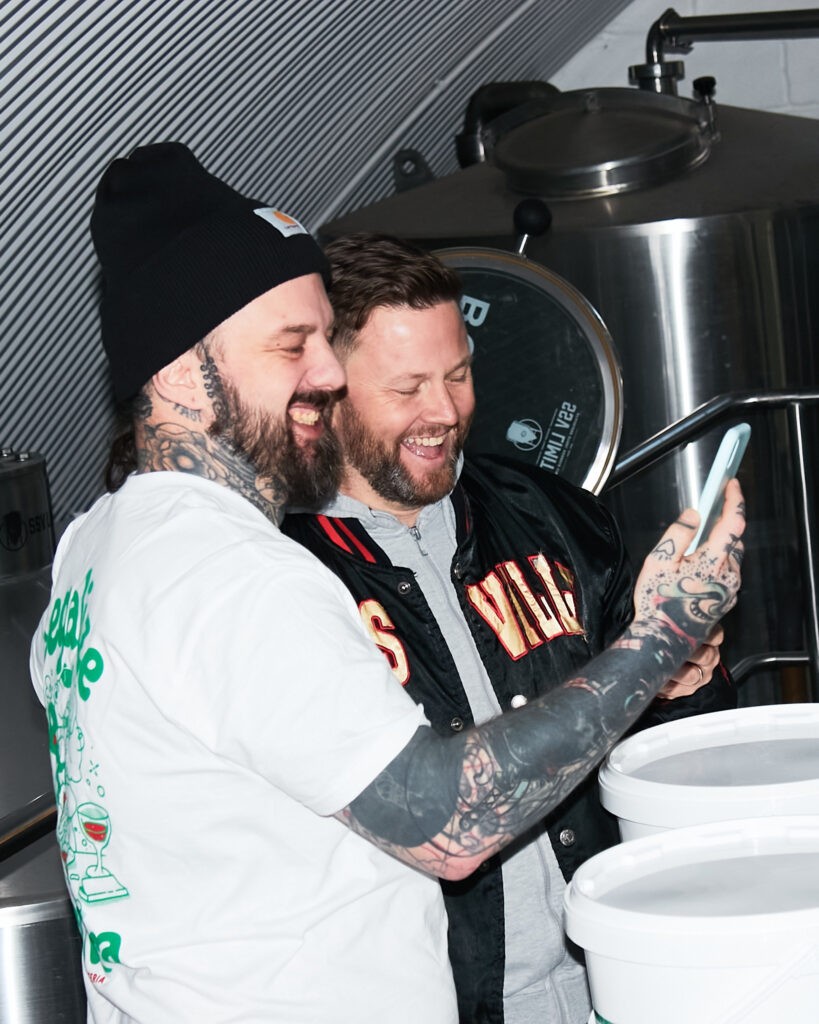
If you happened upon a Morrisons store in January you may have encountered Self-Titled, a 0.5% ABV American pale ale collaboration with Northern Monk It’s Mash Gang’s first major supermarket listing. Or perhaps, you might not have. Such is the demand for beer, consumers have partaken in the British tradition of driving up and down the country in search of the elusive nectar. And in launching that maiden supermarket beer, Childs was aware of the importance of striking a balance.
“I was actually really surprised with people’s reaction to it. Even a few years ago in craft beer a supermarket listing was seen to be the end of your craft beer journey, rather than the beginning,” he says. “I often get confused when people talk about the desire for brewing to be more inclusive but that supermarkets can’t be part of that.”
“It goes without saying that I love bottle shops, I absolutely love bottle shops. They’re one of the best things about going to any town or city. They are our lifeblood and the opportunity to have something curated for you is a fantastic experience.”
He adds: “But I think supermarkets are somewhat utilitarian. You are going there for certain things, and sometimes you don’t want to think about a beer very much. You just want a consumable item and I designed ‘Self-Titled’ to be a consumable item.
“And early on, you can see the reviews are all over the place with people arguing it’s not hoppy enough, or it’s not aggressive enough, or it’s not bitter enough. But I think they’re missing the point and perhaps there’s not a lot of nuance in craft beer sometimes. Someone might say ‘this beer is a little thin’. But would you want something like a thick lager? That sounds awful!”
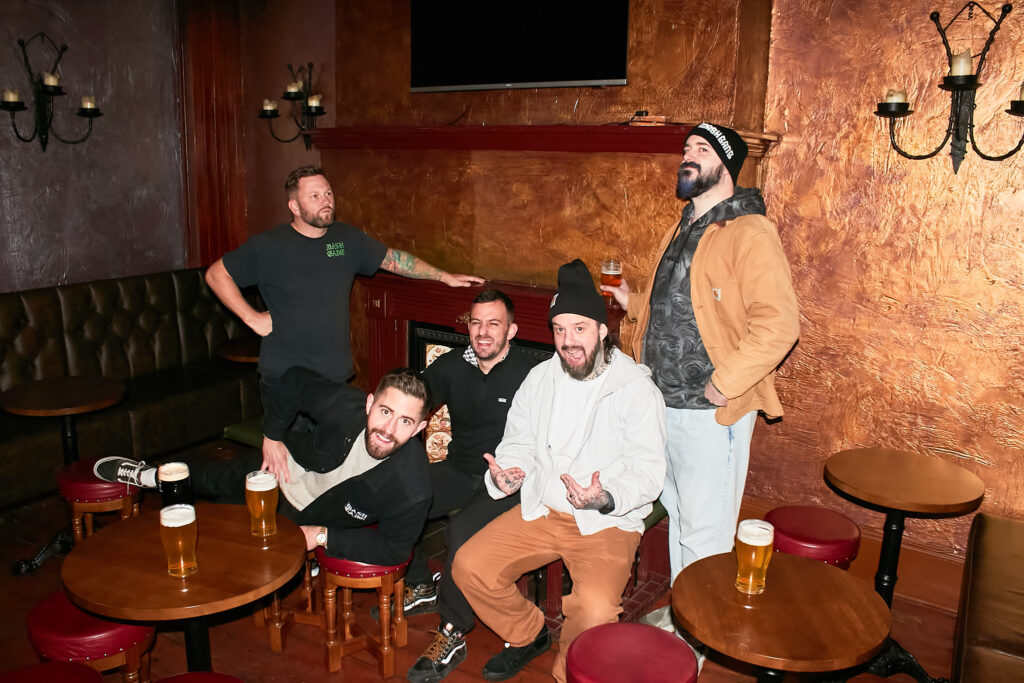
Childs explains: “However, I think the challenge of making a supermarket beer is the equivalent of writing a pop song versus writing a metal song. Both of them need a technical edge but let’s be honest – writing a song that everyone will like is obviously very hard.”
Consumer acceptance of no-and-low alcohol beers has come a long way in recent years. The choice is greater than ever, as are the styles available to the discerning punter. But Childs also feels that is still some way to go for these beers to command the respect they deserve.
“There is still the tendency to minimise and undermine those that brew no-and-low beers. I get asked a lot when I am going to make a real beer, and some brewers will ask that same question because they feel we’re doing pretty well with one hand tied behind our backs,” he recalls.
“I think it was at IndyMan BeerCon and someone asked me about making a proper beer. Because that’s what the world needs, another 5% Hazy IPA. And yes, maybe I have a reputation of being a bit of a d*ck about this but that’s just my sense of humour. Which is funny because if you look in my fridge, it’s full of hazy hop-forward beers!”
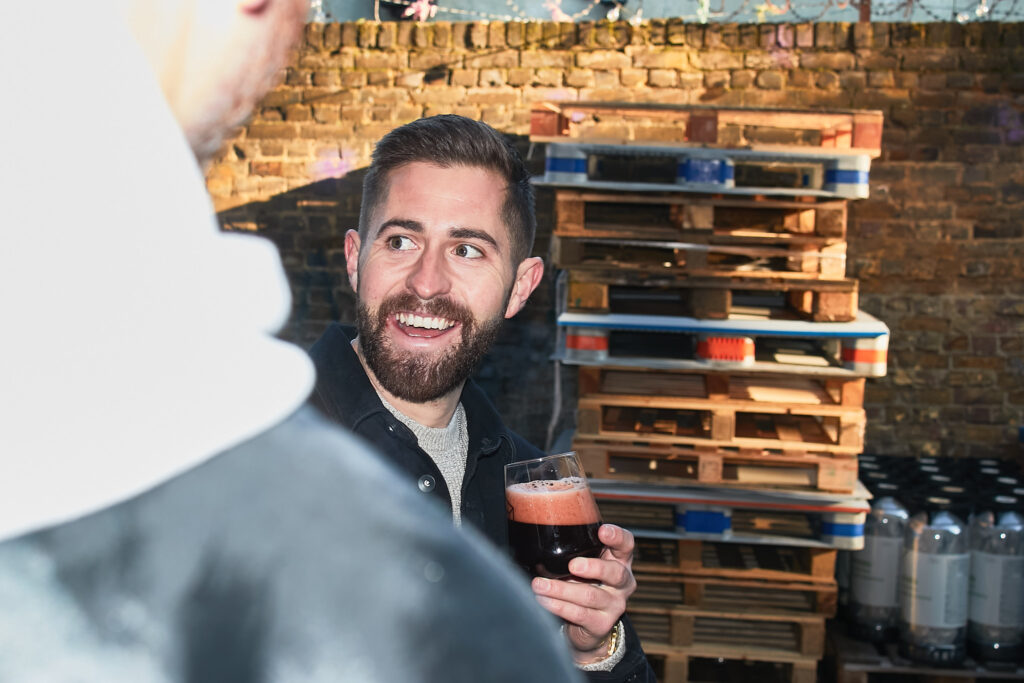
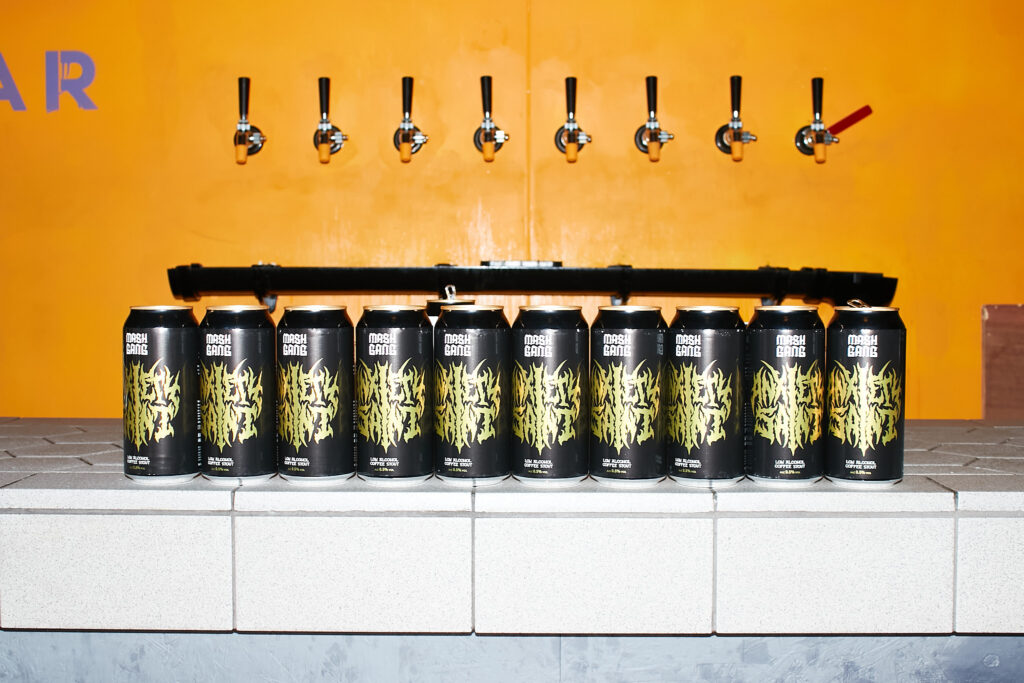
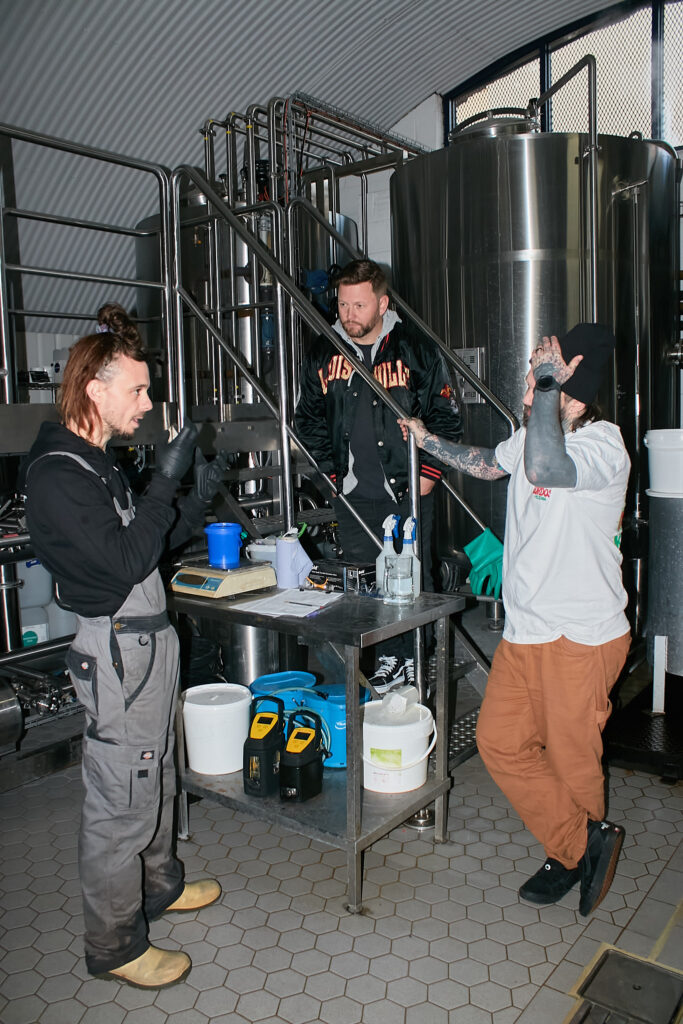
Like so many of us, Childs appreciates a wealth of beer styles, and the brewing expertise used to produce these. But from speaking to his peers, he asks if no-and-low is one of the “last great challenges” for a brewer.
He says: “It does feel as if no-and-low is perhaps the last challenge available to a lot of craft brewers. As a brewer, you want to constantly challenge yourself and do new and exciting things.
“But one of those problems is a lot of the time the customer at large really doesn’t want those new and exciting things. Many beer styles that brewers challenge themselves on are a niche within a niche, but in my opinion that’s why the no-and-low space offers up so much scope for innovation.”
“When it comes to ensuring quality we are using preventative actions, not corrective ones.“
Jordan Childs, Mash Gang
Mash Gang have brewed beers from lagers and pales to sours and stouts. These have been produced at a range of breweries across the UK and beyond. For Childs, working with the right brewing partner has been invaluable. As has brewing alongside brewers that are used to producing beers at the stronger end of the spectrum.
“On the whole, I don’t really work with other low-alcohol companies. And the reason for that is I don’t see a value for either of us in it. You’re already doing it, you’re already doing it well. I prefer to go into a business that traditionally does a lot of high ABV stuff, and show them what we’re doing is really just the inverse of that,” he says.
“And I take a large amount of pride in doing that. Helping them understand what we’re doing is kind of inverse to the imperialization of a beer. So whatever works up, works down, and then we’ll take a great amount of pleasure of working on things that are traditionally very high abv and making a lower version of them.”
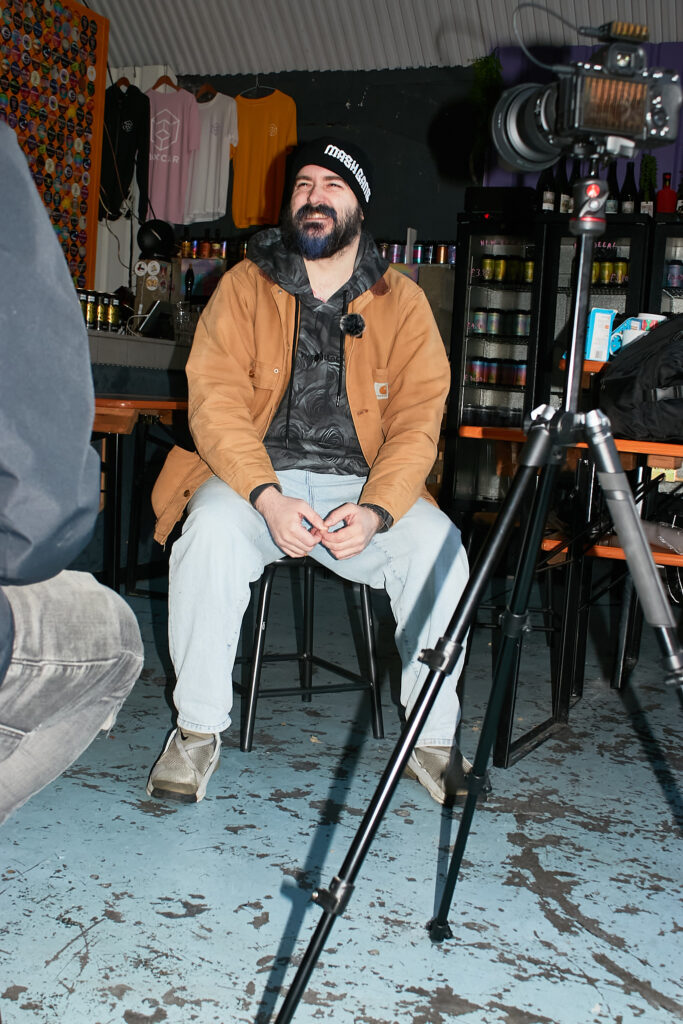
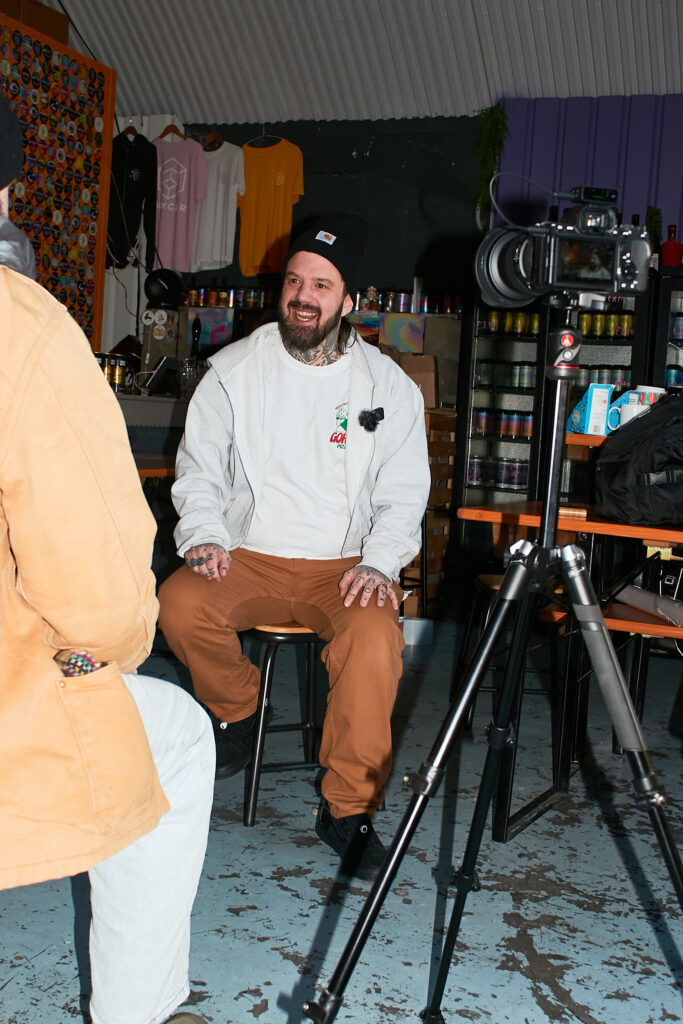
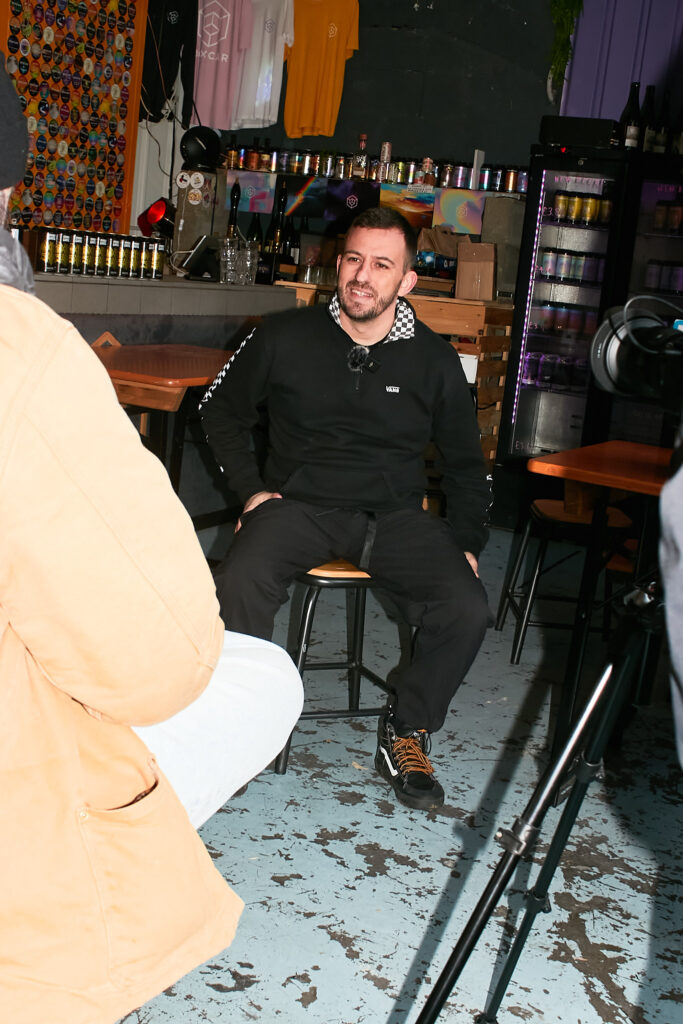
And always looking at the next step, the next project and ways to improve is in the Mash Gang DNA. “Planning is a big part of what we do,” says Childs. “We run our business through the Japanese model of Kaizen, which translates as change for the better and continuous improvement. We are focused on slow, sustained growth. Which is why we wanted to spend the early years of this business working on a solid foundation where you build up trust with consumers that you always deliver a high quality product, and that you are always relentlessly innovating. We are never satisfied with what we do!”
He adds: “No single recipe stays the same. And just because we contract brew, that doesn’t mean we don’t have an eye on quality. I have a close relationship with breweries like Northern Monk and Fierce. Are you going to tell me they don’t respect quality? They are obsessed with it! These beers are our babies, they are just incubated in their womb.”
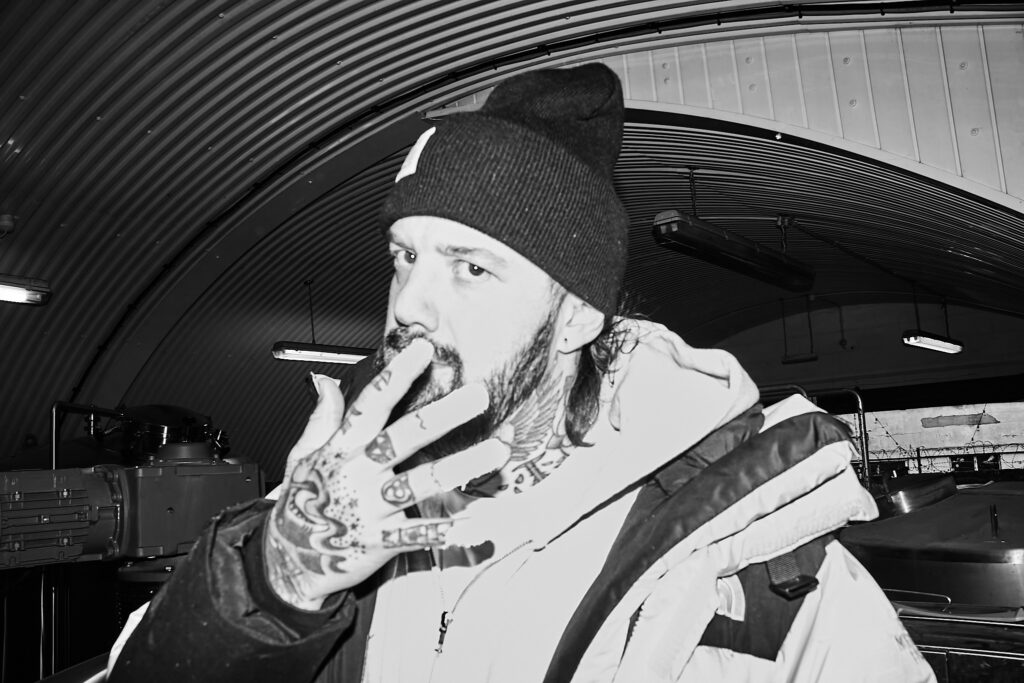
As an eponymously-titled phantom brewery, Mash Gang brew and collab on beers at a number of brewing partners. And disproving the myth that contract brewing means the quality of their beer is at risk is a particular point of passion for Childs and the group.
“For those that believe we aren’t fully-focused on quality because we contract brew, I tell them ‘That’s fine, I understand you want, and have, control over your whole process’. So with that in mind, they must be growing their own hops. Oh, they don’t? Ok then it’s just the grain they’re growing. They don’t? Ok, then it’s just a case of malting their own barley. Nope, not that either. So it’s just a case of the line stopping at where you say it stops, right?”
He explains: “Ok. I ask if you have material safety data sheets for every ingredient? Do you have a standard operating procedure? Do you have Total Quality Management in place? Do you work on the ISO 9001:2008? Oh, you don’t? Well, we do. So when it comes to ensuring quality we are using preventative actions, not corrective ones. And that means in the last 80 batches we’ve produced, we’ve rejected three.
“Also our yields are about 30% higher than most breweries. And that is all to do with the Total Quality Management system. And it’s because the most boring parts of my background is that I worked in like cosmetics, pharmaceutical and stuff like that. And the yields and quality processes that are in a lot of brewing would not be accepted in those sectors, that’s for sure.”
It does feel as if no-and-low is perhaps the last challenge available to a lot of craft brewers.”
Jordan Childs, Mash Gang
While Childs is the brewer and public leader of Mash Gang, he is part of a wider team that has grown since the outfit started out back in 2020 alongside co-founder and CEO James Loveday. As the team has grown, so has its reputation. And it’s what’s in, and on, the can that has propelled Mash Gang to be one of the UK’s leading names in the world of no-and low-alcohol beers. The market for such beers continues to grow, but Childs and the team know that craft beer, without the alcohol, isn’t for everyone. But that’s also ok. Because as Garrett Oliver once told us, liking everything is called having no taste….
“It’s gonna sound dismissive, but it’s not my job to convince people what to like. I think it’s kind of exhausting to want to be liked by everyone. Personally, I break down every product into two things. It’s either utilitarian or it is experiential,” he explains. “A good utilitarian item is like an unbranded t-shirt or Heinz ketchup. You know exactly what it’s going to do.
“But something experiential gives you something to be excited about but it’s also somewhat niche. And what we do is a niche within a niche, and it’s not for everyone. Someone came up to me at Hop City in Leeds and told me that they can’t be bothered with no-and-low, and for me to convince them. But why? I’m not a salesperson like that.
“Just go on something like Untappd and check out the reviews for our beers. Those people on there are mean-spirited and brutal. But even then they’’ say they dock two stars for the beer being a 0.5% beer yet they still give it three stars, so we have a five-star beer then? The quality is shining through without us having to convince people of it.”
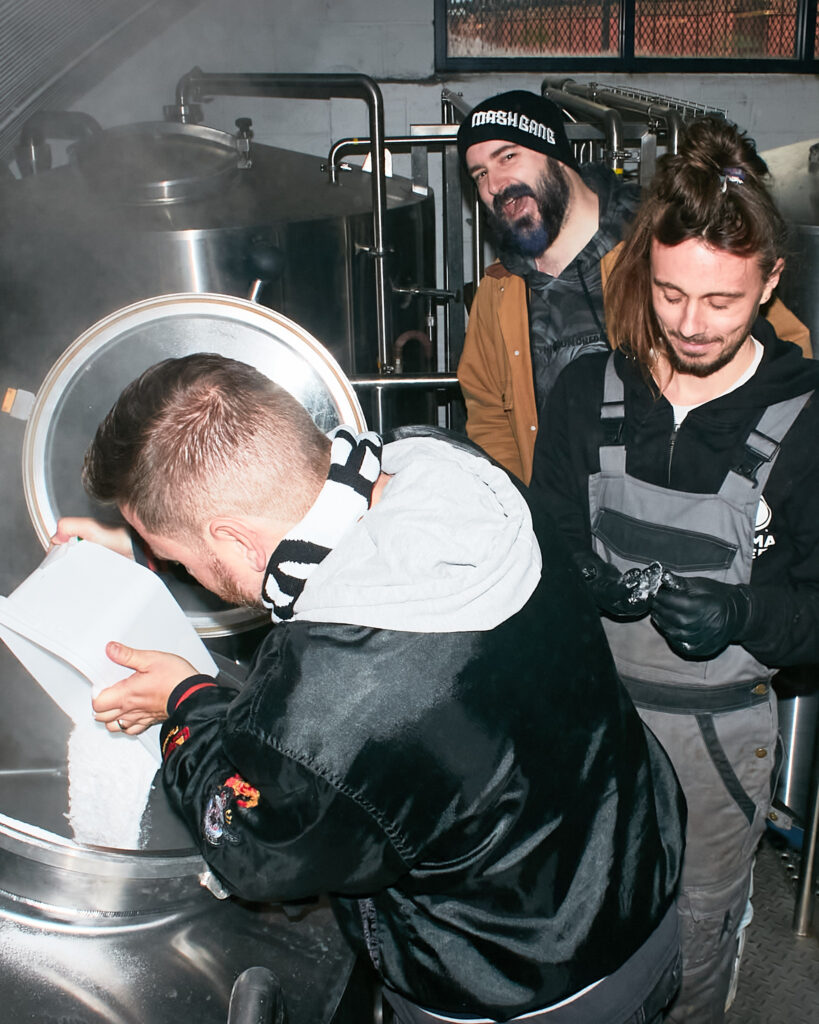
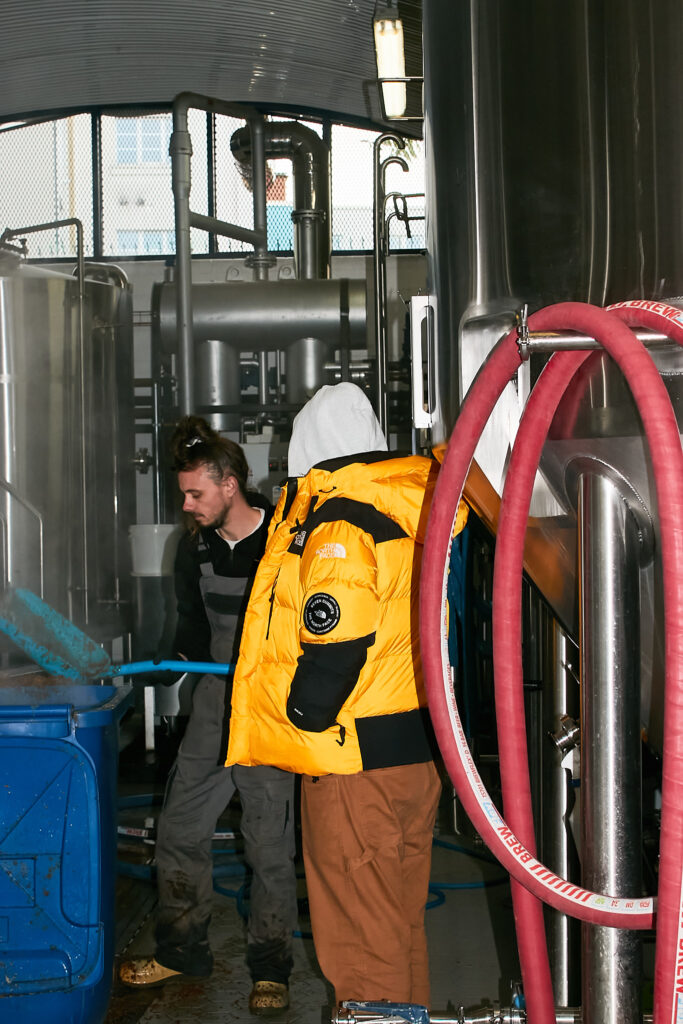
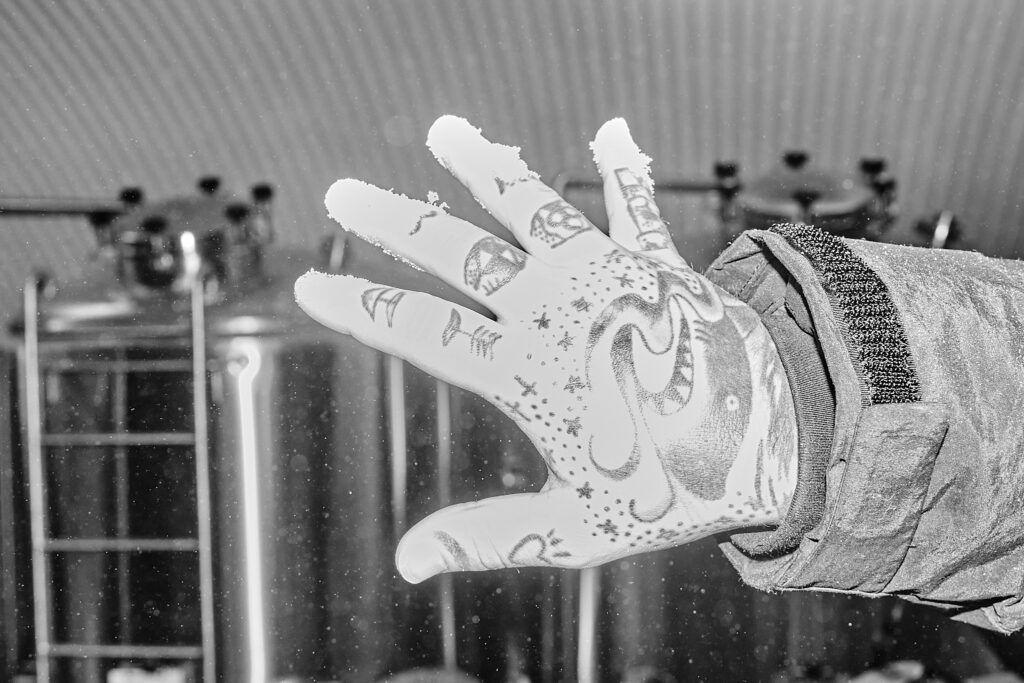
He adds: “And if you’re willing to miss out on it, because you want to make this bizarre standpoint, that’s either about your hyper-masculinity of not drinking something that doesn’t have alcohol in it, then what’s the point in craft beer at all?
“Actually, you may as well skip drinking spirits too and just have a Xanax and black out on the sofa if that’s the case. For me, I don’t drink alcohol for the effects. That’s a by-product of the beer for me. I enjoy beer for the flavour and for the experience.
And one recent experience was Childs trying ‘A Hymn For the Fields’ from Field Recordings (North Brewing) at our very own Brewers Congress event. A Hymn For the Fields is a Saison, featuring Pilsner malt and wheat mashed at a low temperature begin by making a rounded beer with a dry finish.
Dry hopped with Nelson Sauvin from New Zealand, German Hallertau Blanc and a small addition of US Talus in the whirlpool, the brewery co-pitched traditional farmhouse saison yeast and wine yeast nutrient, they both boost the vinous flavours of the hops and bring a light tartness and full body.The result is a hybrid between a Belgian classic, a NEIPA and a sweet wine.
“Honestly, that is one of the best beers I’ve ever had. What even is it? I don’t even know! It’s a bizarre blend of styles but something that is truly exciting and it won attention, especially brewers’ attention, for good reason,” he explains. “It blew me away. But again, it won’t be liked by everyone but like I said, you don’t have to be liked by everyone. It’s fine. In fact, the best things aren’t liked by everyone. I always think if people have a strong opinion of what you’re doing, it’s better than indifference!”

